How deep to dig a pond | What is the best way to dig a pond?
How can I make sure that the top of the pond is level?
Set up a datum peg, which will be your point of reference. The top of this peg marks the level of the top edges of the pond. Hammer another peg into the ground a short distance from the datum peg and rest a spirit level on the tops of both pegs. Adjust the height of the second peg until the top is level with the first.Add another peg farther round the edge of the pond and adjust its height as before. Continue to work around the pond until you are back at the datum peg, which should register as being level with the last peg you have hammered in. The tops of these pegs should form a level platform, and it is from these pegs that you measure and adjust the height of the sides of the pond so that they, too, are level.What is the best way to dig a pond?
Start by digging around the perimeter of the pond so that the outline is clearly defined and then restrict all future digging to within this area. Even if you are using a mechanical digger it is safer to mark the outline by hand. First, remove all the topsoil within the outline and place this to one side on a sheet of polythene. Then start on the subsoil, which should be kept separate on another sheet of polythene. Dig the pond down to the depth of the first ledge, keeping the bottom of the excavation level. When you reach the first ledge, mark out the width of the ledge with pegs and draw out the outline of the second ledge. Dig a trench between these outlines and then excavate the soil within it, either down to the level of the next ledge or down to the bottom of the pond, depending on how many ledges you are having.Checking levels
A spirit level is essential for checking that the top edge of the pond is perfectly level, but most spirit levels are not long enough to reach from one side of a pond to the other. Use a straight-edged length of wood (a straight-edge), which will reach from one peg to the next. The spirit level can be laid on this.What do i do with the spoil?
You will find that an amazing amount of soil comes out of a hole dug for a pond, and there is usually far too much to keep or to lose around the garden, if you keep any of the soil, make sure that it is the topsoil. The subsoil is usually useless from the point of view of the garden and is best discarded. The quickest and easiest but most expensive way of getting rid of it is to hire a refuse skip so that it can be taken away.If you stack it all in a corner of the garden in the hope that you will have some use for it or that you might find someone who needs it, it could be hanging around for years. There are few uses for the large amount of soil you will get from the pond. A rock garden needs to be free draining, and although topsoil might be suitable, clay subsoils are the last thing you want to include. If part of your garden slopes you may be able to use some of the soil as terracing, but this should be part of your overall plan from the outset. Topsoil is easier to use and can be spread and mixed with soil on existing borders or used to construct a rock garden, but even this is time consuming and the best thing may be to get rid of the lot so that you don't have to worry about it.
Step By Step How To Build A Wildlife Pond For Your Garden Or Allotment
What size should I make the hole relative to the size of the finished pond?
The size of the excavated hole will depend on the type of pond you are constructing and the type of liner to be used. The hole for a pond with a geotextile underlay and a flexible liner should be about 1cm (1/2in) larger than the finished pond, but the difference is so slight that it is usually unnecessary to take it into account. If you are using a preformed liner you will need to make the hole 5-8cm (2-3in) deeper and wider than the liner. If the pond is made of concrete or puddled clay the hole will have to be much larger to accommodate the material. A concrete pond will need at least an additional 10cm (4in) on the depth and on all sides to allow for the thickness of the concrete. A pond made of puddled clay will need a minimum extra 30cm (1ft) all round, 15cm (6in) for the thickness of clay and 15cm (6in) for a layer of soil that will protect the day and in which plants can grow. If you use bentonite for a puddled pond allow an extra 30cm (1ft) so that a protective layer of soil can be placed on top of the bentonite.Excavating holes
When you are digging a hole add the depth indicated to each side and the bottom.• Flexible liner: 1cm 1/2in)
• Rigid, preformed liner: 5-8cm (2-3in)
• Concrete: 10cm (4in)
• Clay and bentonite: 30cm (1ft)

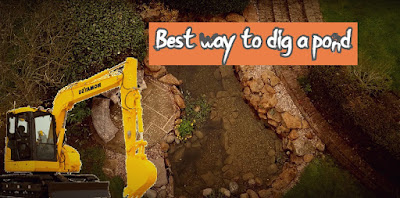
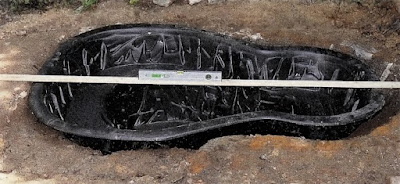



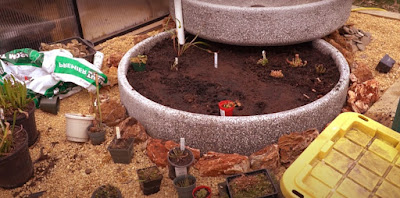


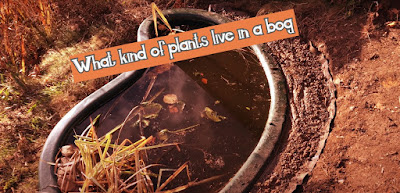
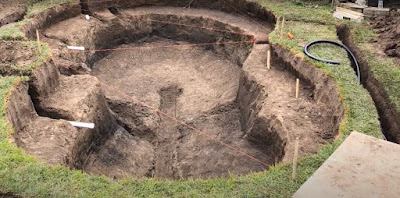
Comments
Post a Comment